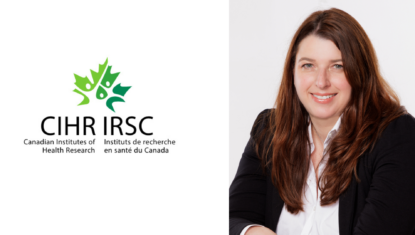Sleep disordered breathing (SDB) is associated with many childhood diseases. Children with obesity or neuromuscular disease, for example, may develop hypoventilation from weak or overloaded respiratory muscles, compromising airway patency and/or gas exchange during sleep. Children with mood disorders and hypertension may also have a higher incidence of disordered sleep compared to others in the general population. The research agenda of this team is to determine the prevalence of sleep disordered breathing and assistive technologies in chronic disease states, to study diagnostic tools and predictors of sleep-disordered breathing, and to evaluate the benefits and consequences of treatment from a multi-disciplinary perspective. Treatment of the sleep disordered breathing alongside the underlying condition must be considered in development of a management plan and the consequences and benefits of this treatment then can thus be better understood.
Related News
-

22/07/2024
CIHR Spring 2024 project grant success
-

04/04/2019
2018-19 CHAMO Innovation Fund competition
Research Projects
-
Sleep quality, physical activity, screen time, and substance use in children with obesity: associations with obstructive sleep apnea
01/03/2023
In children with obesity, more substance-use behaviors were independently associated with greater OSA severity. As there are complex, bidirectional relationships between lifestyle behaviors and OSA severity, interventions need to be comprehensive and multifactorial to ensure successful treatment of OSA and its sequelae in children.
-
The role of insufficient sleep and circadian misalignment in obesity
16/01/2023
Growing evidence indicates that both insufficient sleep and circadian misalignment contribute to adverse metabolic health and obesity by altering multiple components of energy metabolism and behaviour. Insufficient sleep increases 24 h energy expenditure and, under controlled energy intake conditions, changes in appetite hormones occur that promote hunger and energy intake.
-
Persistent obstructive sleep apnoea in children: treatment options and management considerations
29/10/2022
In this Personal View, we discuss the use and the need for evaluation of current and novel therapeutics, the role of shared decision-making models that consider patient preferences, and the importance of considering the social determinants of health in research and clinical practice.
-
European Respiratory Society Task Force: Technical Standards for using Type III devices in the diagnosis of sleep disordered breathing in adults and children
10/07/2022
This Technical Standard summarises data on Type III studies published since 2007 from multiple perspectives in both adult and paediatric sleep practice.
-
First sleep health guidelines for Canadian adults: implications for clinicians.
02/02/2021
Canada, marks an important step towards a better recognition of “sleep health” as a critical component of health and wellness. Clinicians are well positioned to discuss sleep health with their patients and initiate treatment options. It is hoped it will now be part of routine medical examinations.
-
Paediatric adenotonsillectomy, part 1: surgical perspectives relevant to the anesthetist
01/06/2020
Obstructive sleep apnoea is a systemic inflammatory disease with multiple end-organ effects, increased sensitivity to opioids and reported pain. The anaesthetic technique should be adjusted accordingly and can be informed by preoperative overnight oximetry, an increasingly accepted diagnostic tool for OSA. Residual symptoms of oSDB/OSA after AT imply severe baseline disease and/or an underlying medical complexity.
-
Paediatric adenotonsillectomy, part 2: considerations for anaesthesia
01/06/2020
The perioperative anaesthetic care of a child undergoing AT is evolving. Perioperative risk stratification is becoming less reliant on PSG as overnight pulse oximetry is an increasingly acceptable alternative. Validated paediatric questionnaires to diagnose OSA or predict critical PRAEs are being developed. These are likely to incorporate objective measures, such as overnight pulse oximetry, to improve performance of the tools. Preparation is required to address the unique airway challenges inherent in the child undergoing AT. Increased pain and sensitivity to opioid-induced respiratory depression in the child with OSA compel using a multimodal opioid-sparing analgesic technique.
-
Insulin Resistance and Hypertension in Obese Youth With Sleep-Disordered Breathing Treated With Positive Airway Pressure: A Prospective Multicenter Study
01/09/2017
In youth with obesity and SDB, metabolic dysfunction and hypertension were highly prevalent. Larger, longer-term studies are needed to determine whether PAP improves cardiometabolic outcomes in obese youth.
-
Does Neck-to-Waist Ratio Predict Obstructive Sleep Apnea in Children?
01/12/2014
Neck-to-waist ratio, an index of body fat distribution, predicts OSA in older children and youth, especially in those who were overweight/obese.
Researchers
-
Jean-Philippe Chaput
Senior Scientist, CHEO Research Institute
-
Refika Ersu
Investigator, CHEO Research Institute
-
Sherri Katz
Senior Scientist, CHEO Research Institute
-
Kimmo Murto
Investigator, CHEO Research Institute
-
Dhenuka Radhakrishnan
Scientist, CHEO Research Institute
-
Jean-Philippe Vaccani
Investigator, CHEO Research Institute






